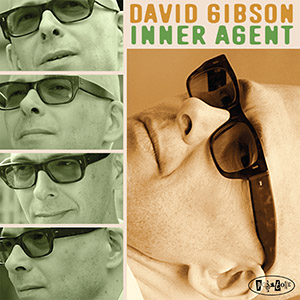 The idea of creating a safe space to allow for disregarding safety may be paradoxical in nature, but it makes perfect sense when contextualized or couched in jazz terms. There can be no resolution of faith in one’s surroundings and colleagues without taking the trust fall, there can be no reward without risk, and there can be no true growth without belief. Those ideals are jazz to the core, and they’re at the heart of this project from trombonist David Gibson.
The idea of creating a safe space to allow for disregarding safety may be paradoxical in nature, but it makes perfect sense when contextualized or couched in jazz terms. There can be no resolution of faith in one’s surroundings and colleagues without taking the trust fall, there can be no reward without risk, and there can be no true growth without belief. Those ideals are jazz to the core, and they’re at the heart of this project from trombonist David Gibson.
Inner Agent, the fourth fine album that Gibson has released on the Posi-tone imprint, seeks to explore those very concepts to the fullest. It walks a similar path as Boom! (Posi-tone, 2015), a directional shift that found Gibson moving away from an organ-centric format and creating a bolder sonic brew with a crew of young guns, but it’s a more evolved statement. Gibson has essentially kept the Boom! band intact—trumpeter Freddie Hendrix fills the seat formerly occupied by Josh Evans, but pianist Theo Hill, bassist Alexander Claffy, and drummer Kush Abadey all remain aboard—and his music is all the better for it. The rapport between these men has been strengthened over time, a greater sense of understanding has been fostered through their interactions, and a willingness to take more chances is evident on this recording.
Gibson delivers a winning program that references his influences, speaks to his love of diversity, and allows for the unexpected to enter into the equation. He comes off as an intrepid and indomitable spirit, but he’s not afraid to also let his emotions show. Whether engaging his core group in dialogue, working with or against his guests—saxophonists Doug Webb and Caleb Wheeler Curtis—or ceding the spotlight entirely, Gibson personifies leadership and puts the focus on the music. This is jazz with nothing to hide, made by a band with a hell of a lot to say.
The album kicks off with a one-two punch in the form of the racing title track and the shape-shifting “Axe Grinder.” Those original numbers position Gibson and his band as aggressors, but there’s more than blood, sweat, and sheer force here. A visit to the church of Billy Taylor on “I Wish I Knew How It Would Feel To Be Free” makes that point. From there, Gibson keeps you guessing about where he might go. “The Scythe” is a slice of scintillating modern jazz, hard driving and edgy in all the best ways; Claffy’s “AJ” is pure buoyant charm; “The Court” and “Sweetness”—two tunes penned by trombonist Curtis Fuller—speak to strength and jauntiness, respectively; and “Gravy,” an older Gibson tune that comes from another time and band in his past, is unadulterated jazz-funk. That last number would’ve been a finer closer, but Gibson’s personalized take on “Here Comes The Sun” is an even better one.
I had the pleasure of being present when some of this music came into existence in the studio, and it’s no lie or exaggeration to say that the energy in the room at the time has carried over to the finished product. There’s a good deal of music out there that pulls from these same stylistic bags, but much of it seems calcified by comparison. Inner Agent is brimming with life.
Dan Bilawsky – All About Jazz
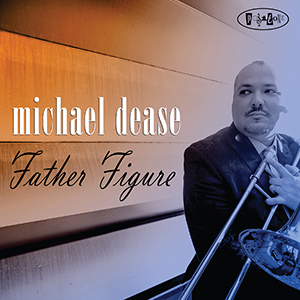 Michael Dease is an inventive trombonist with an athletically tuneful sound and a predilection for bringing his instrument’s voice to the fore. Having built the foundation of his career as a section player in bands led by Christian McBride and Roy Hargrove, he has now become a preeminent leader in his own right. Within his preferred artistic setting—the bop-oriented small group—he has recorded a number of fine recordings for Posi-Tone. Father Figure, his latest for the label, is as poignant a statement as he’s ever made. The album places Dease in the dignified role of jazz elder amid a crew of young and hungry jazz musicians: saxophonists Immanuel Wilkins and Markus Howell (who split lead duties on alternating tracks), drummer Luther Allison, bassist Endea Owens, vibraphonist Behn Gillece and pianist Glenn Zaleski, who appeared on Dease’s previous album, Decisions, and who exudes an almost telepathic bond with the trombonist. The two share the spotlight on an exceptionally swinging version of “Marian The Librarian,” and create swaths of dreamy magic on “Brooklyn.” And while Dease’s limber, flickering bop lines are an undeniable attraction (check the machine-gun tonguing on “Riff Raff”), it’s his ability to shape a group dynamic that really makes an impression. On group jams like “Church Of The Good Hustle” and Charlie Parker’s “Confirmation,” he blazes a trail that his young acolytes seem all too happy to follow.
Michael Dease is an inventive trombonist with an athletically tuneful sound and a predilection for bringing his instrument’s voice to the fore. Having built the foundation of his career as a section player in bands led by Christian McBride and Roy Hargrove, he has now become a preeminent leader in his own right. Within his preferred artistic setting—the bop-oriented small group—he has recorded a number of fine recordings for Posi-Tone. Father Figure, his latest for the label, is as poignant a statement as he’s ever made. The album places Dease in the dignified role of jazz elder amid a crew of young and hungry jazz musicians: saxophonists Immanuel Wilkins and Markus Howell (who split lead duties on alternating tracks), drummer Luther Allison, bassist Endea Owens, vibraphonist Behn Gillece and pianist Glenn Zaleski, who appeared on Dease’s previous album, Decisions, and who exudes an almost telepathic bond with the trombonist. The two share the spotlight on an exceptionally swinging version of “Marian The Librarian,” and create swaths of dreamy magic on “Brooklyn.” And while Dease’s limber, flickering bop lines are an undeniable attraction (check the machine-gun tonguing on “Riff Raff”), it’s his ability to shape a group dynamic that really makes an impression. On group jams like “Church Of The Good Hustle” and Charlie Parker’s “Confirmation,” he blazes a trail that his young acolytes seem all too happy to follow.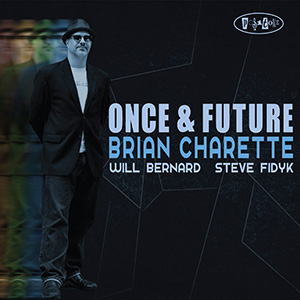 Dusted In Exile
Dusted In Exile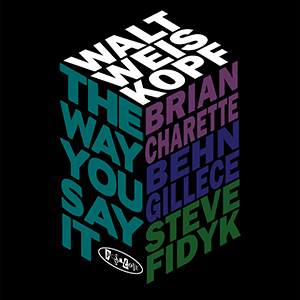 With over three-and-a-half decades in the New York jazz scene, beginning with Buddy Rich and Toshiko Akiyoshi, Walt Weiskopf is long established as a hard-blowing tenor saxophonist and creative composer. Accompanied by Charette, up-and-coming vibraphonist Behn Gillece and Steve Fidyk, most of The Way You Say It focuses on Weiskopf’s potent originals, starting with the percolating blues “Coffee and Scones”. The catchy unison theme of “Blues Combination” is negotiated with the confidence of a working band, Fidyk providing a strong undercurrent. Alex Kramer-Joan Whitney-Mack David’s “Candy” was long favored by soul jazz saxophonists and this understated interpretation pays homage to past greats, with sublime organ and soft brushwork supplying the perfect backdrop. There’s a change in direction with the dramatic setting of Weather Report’s “Scarlet Woman”, then an effortless galloping through Charlie Parker’s bop gem “Segment” before cooling off the listener with the lush title ballad.
With over three-and-a-half decades in the New York jazz scene, beginning with Buddy Rich and Toshiko Akiyoshi, Walt Weiskopf is long established as a hard-blowing tenor saxophonist and creative composer. Accompanied by Charette, up-and-coming vibraphonist Behn Gillece and Steve Fidyk, most of The Way You Say It focuses on Weiskopf’s potent originals, starting with the percolating blues “Coffee and Scones”. The catchy unison theme of “Blues Combination” is negotiated with the confidence of a working band, Fidyk providing a strong undercurrent. Alex Kramer-Joan Whitney-Mack David’s “Candy” was long favored by soul jazz saxophonists and this understated interpretation pays homage to past greats, with sublime organ and soft brushwork supplying the perfect backdrop. There’s a change in direction with the dramatic setting of Weather Report’s “Scarlet Woman”, then an effortless galloping through Charlie Parker’s bop gem “Segment” before cooling off the listener with the lush title ballad. This trombone man almost has enough wind in him to sound like a big band by himself. A high octane set with a mystical bent, Gibson smokes his way through this set delivering the kind of high energy blowing that is sure to put him on your list of those to keep an ear out for. Obviously playing from the gut and the heart, this music connects and opens your mind as well as your ears. Solid stuff from a cat that’s here to stay.
This trombone man almost has enough wind in him to sound like a big band by himself. A high octane set with a mystical bent, Gibson smokes his way through this set delivering the kind of high energy blowing that is sure to put him on your list of those to keep an ear out for. Obviously playing from the gut and the heart, this music connects and opens your mind as well as your ears. Solid stuff from a cat that’s here to stay.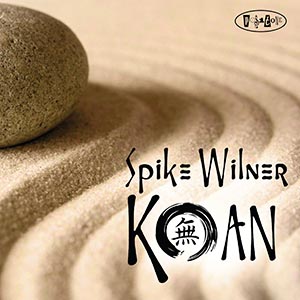 Pianist and composer Spike Wilner, a native of Manhattan, may be best known for his “night job”, manager of both Smalls Jazz Club and its next-door neighbor, Mezzrow. He’s also quite an accomplished pianist and band leader; “Koan” is his 10th album as a leader and 3rd for the Posi-Tone label. The CD, like his previous release, “La Tendresse“, is a trio date, this time with Tyler Mitchell (bass) and Anthony Pinciotti (drums). The 12-song program features excellent originals, jazz classics (including two compositions by Duke Ellington) and a pair of standards.
Pianist and composer Spike Wilner, a native of Manhattan, may be best known for his “night job”, manager of both Smalls Jazz Club and its next-door neighbor, Mezzrow. He’s also quite an accomplished pianist and band leader; “Koan” is his 10th album as a leader and 3rd for the Posi-Tone label. The CD, like his previous release, “La Tendresse“, is a trio date, this time with Tyler Mitchell (bass) and Anthony Pinciotti (drums). The 12-song program features excellent originals, jazz classics (including two compositions by Duke Ellington) and a pair of standards.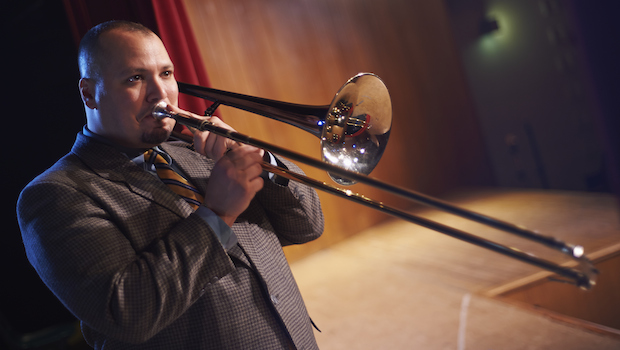
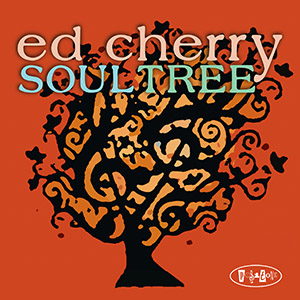 Soul Tree “It is wise to cultivate the tree which bears fruit in our soul”. This maxim of Henry David Thoreau stands in the booklet of “Soul Tree” and packs as best you can the sense of this work that marks the return as leader of the excellent guitarist Ed Cherry Posi-tone label.
Soul Tree “It is wise to cultivate the tree which bears fruit in our soul”. This maxim of Henry David Thoreau stands in the booklet of “Soul Tree” and packs as best you can the sense of this work that marks the return as leader of the excellent guitarist Ed Cherry Posi-tone label.